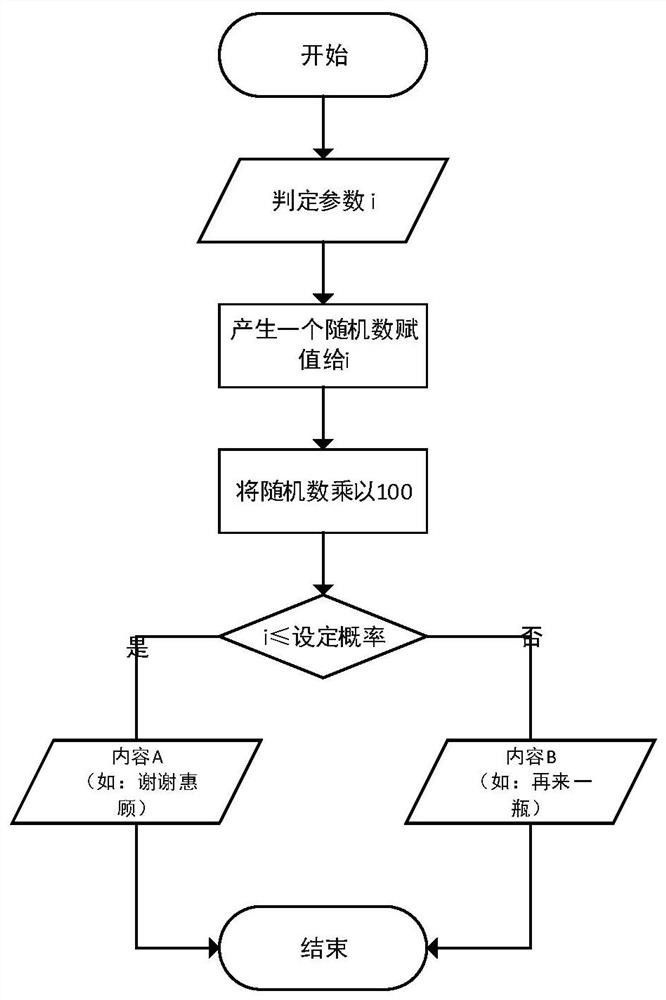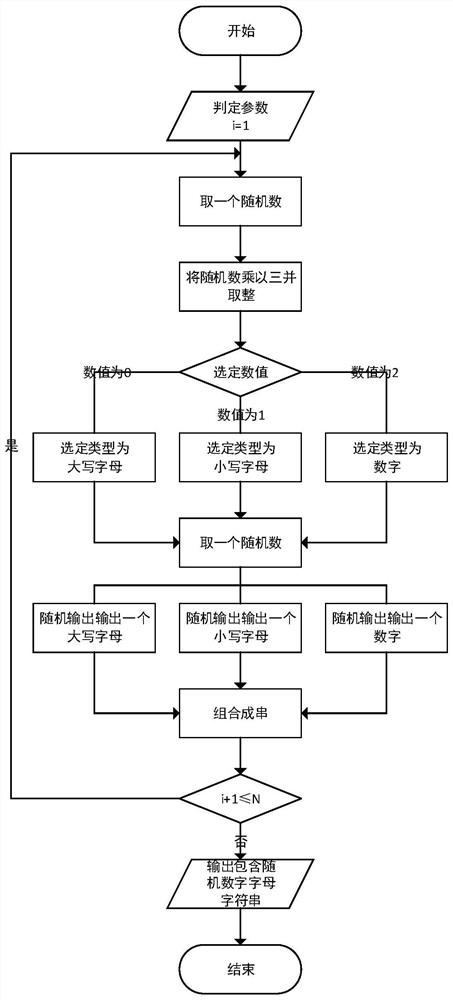Printing method
A technology for starting printing and printing content, applied in the field of printing, can solve the problems of optimization, low degree of intelligence, and inconvenient adjustment of the probability distribution of winning content.
- Summary
- Abstract
- Description
- Claims
- Application Information
AI Technical Summary
Problems solved by technology
Method used
Image
Examples
Embodiment 1
[0040] Such as figure 1 Shown is a schematic flow chart of Embodiment 1. In this example, content A "Thank you for your patronage" and content B "One more bottle" are randomly printed and output. Content A is preset as the content corresponding to the first range, and content B The default is the content corresponding to the second range, set the first range to 80, and set the value greater than 80 to less than 100 as the second range.
[0041] Embodiment one includes the following processes:
[0042] 1) To start printing, first take a random number and define the random number as a positive number less than 1;
[0043] 2) Multiply the random number by 100 to get a value, then compare the value with 80;
[0044] 3) If the value is less than or equal to 80, print content A, otherwise print content B.
[0045] Repeat steps 1), 2), and 3) to perform continuous printouts.
Embodiment 2
[0047] Such as figure 2 Shown is a schematic flow chart of Embodiment 2, which realizes a single type of character string printout.
[0048] Embodiment two includes the following processes:
[0049] 1) To start printing, first take a random number;
[0050] 2) Bring the random number into the random content generation unit to generate content, the content generated by the first random number is recorded as the first content, repeat 1) and 2) until the Nth content is generated, N is the preset number of times of generation;
[0051] 3) Print out the first content to the Nth content.
[0052] The first content to the Nth content are combined into a character string, and N is the number of digits of the preset character string, such as 9 digits, then the first content to the ninth content need to be generated, one character at a time.
[0053] The process of generating content by the random content generating unit is: processing the random number so that it can be compared wi...
Embodiment 3
[0058] Such as image 3 Shown is a schematic flow chart of Embodiment 3, which realizes various types of character string printouts.
[0059] Compared with Embodiment 2, Embodiment 3 adds a process, that is, first judges which type of content the content belongs to according to the random number, and after determining the type of content, processes the random number so that it can be compared with the ASCII table to obtain Random content under one type.
[0060] In this example, the random number is defined as a positive number less than 1, and the random number is multiplied by 3 and rounded up. In this way, three integers can be obtained, namely 0, 1, and 2. Define 0 to correspond to the first type (capital letters) , definition 1 corresponds to the second type (lowercase letters), definition 2 corresponds to the third type (number), then before generating the first content to the Nth content, first determine which type of character the random number should be generated for...
PUM
 Login to View More
Login to View More Abstract
Description
Claims
Application Information
 Login to View More
Login to View More - R&D
- Intellectual Property
- Life Sciences
- Materials
- Tech Scout
- Unparalleled Data Quality
- Higher Quality Content
- 60% Fewer Hallucinations
Browse by: Latest US Patents, China's latest patents, Technical Efficacy Thesaurus, Application Domain, Technology Topic, Popular Technical Reports.
© 2025 PatSnap. All rights reserved.Legal|Privacy policy|Modern Slavery Act Transparency Statement|Sitemap|About US| Contact US: help@patsnap.com



